Photo: Jack Vartoogian/Getty Images
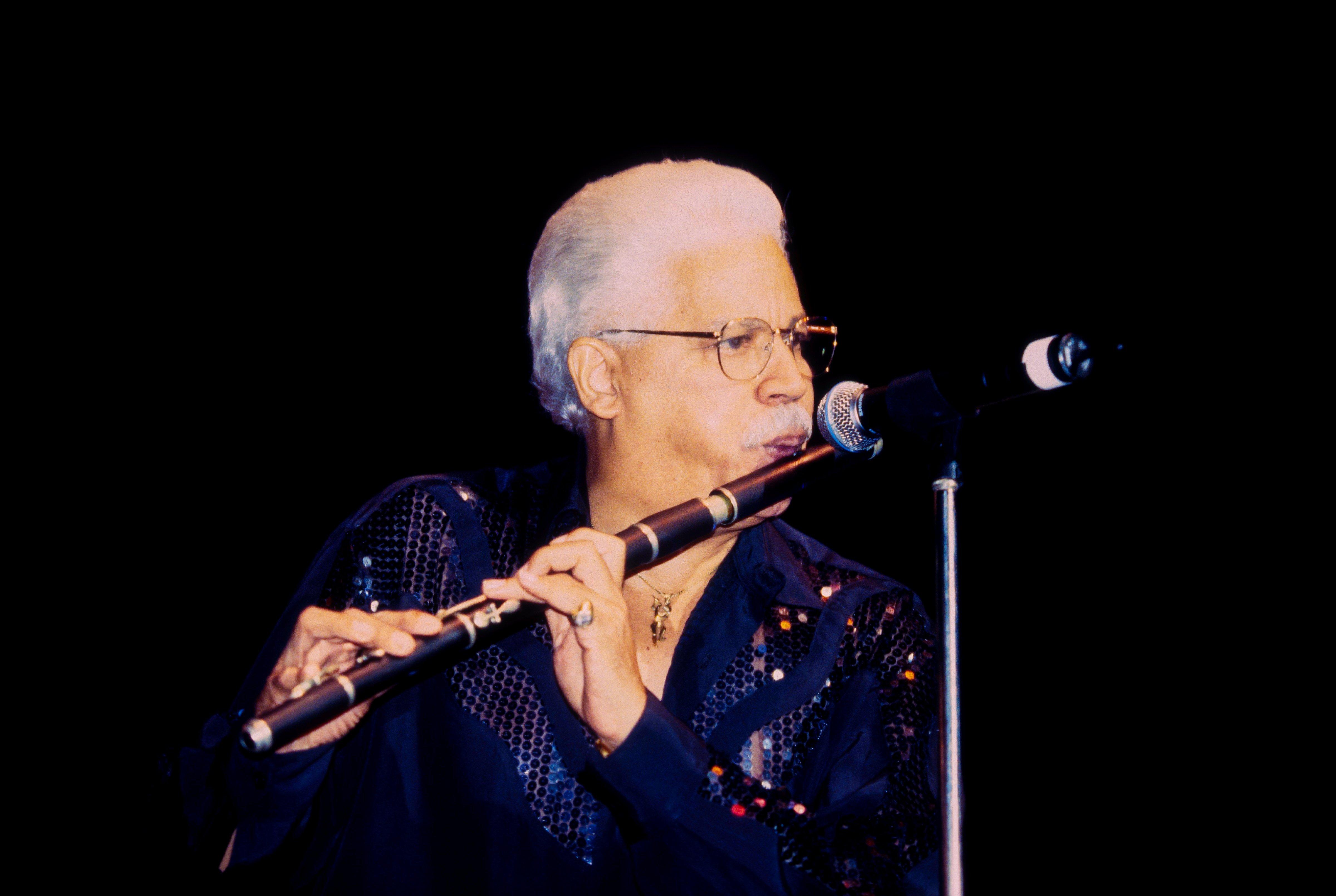
Johnny Pacheco
news
In Remembrance: How Johnny Pacheco Preached The Gospel Of Salsa To The World
The soul-stirring genre would be unrecognizable without Johnny Pacheco, the bandleader who proliferated the international sound as a solo artist and the co-founder of Fania Records
Chances are you've heard salsa music, or at least heard of it. But what exactly is it, ingredient by ingredient? Let Johnny Pacheco, who helped popularize the genre back in the 1960s, spell it out for us.
"Salsa came mainly from the Cuban music," the Dominican multi-instrumentalist, bandleader and label founder explained to La Voz Del Mambo in 2005. "Its roots are mambo, rhumba, son montuno, guaracha, guaguanco, guajira, cha cha chá." Which sounds like a lot to distill into one sound, right? Even if you aren't familiar with those genres? Not for Pacheco. When he lifted a flute to his lips, those seven threads braided into one—so much so, that he sometimes felt more like an orator than a musician.
Some call Fania Records the Motown of that catchall genre, and Pacheco was its co-founder. (His partner was Jerry Masucci, an ex-NYPD cop-turned-attorney.) Throughout the '60s and '70s, the pair expanded a small operation into a label synonymous with salsa itself, with flagship artists like the Fania All-Stars defining the genre for millions. Not only that, Pacheco prolifically released his own albums through the label, like his classic team-up with Cruz, 1974's Celia & Johnny. Altogether, he received five GRAMMY Award nominations, and in 2005, he received a Lifetime Achievement Award from the Latin GRAMMYs.
Sadly, Pacheco died Monday (Feb. 15) in Teaneck, New Jersey, after being hospitalized for pneumonia. His wife, Cuqui, confirmed the news, as reported by The New York Times. He was 85.
<blockquote class="twitter-tweet"><p lang="en" dir="ltr">R.I.P. Johnny Pacheco, March 25, 1935 – February 15, 2021. Here he is with Celia Cruz and Tito Puente at Victor's Cafe in New York City in 1988. <a href="https://t.co/2C2kjvMBgo">pic.twitter.com/2C2kjvMBgo</a></p>— Dust-to-Digital (@dusttodigital) <a href="https://twitter.com/dusttodigital/status/1361531732227457025?ref_src=twsrc%5Etfw">February 16, 2021</a></blockquote> <script async src="https://platform.twitter.com/widgets.js" charset="utf-8"></script>
In a BBC clip from 1988, Cruz sums up Pacheco's magnitude. Together with percussion extraordinaire Tito Puente at Victor's Cafe in New York City, Cruz leads them in call-and-response. "I've always been a lucky girl, fortune's always held my hand / Since I joined Sonora Matancera, Cuba's most popular band," she croons in Spanish. "It was with Sonora I got my break / I came from Cuba to New York / In search of something different / And I was lucky to record with the great Tito Puente / With Tito Puente it went really well / But the best was yet to come / Then I met Johnny Pacheco, star of the Dominican Republic!"
That star was born Juan Azarías Pacheco Knipping in Santiago de los Caballeros, the second-largest city in the country. His father, Rafael Pacheco, played clarinet in and led the Orquesta Santa Cecilia, a prominent Dominican big band. When Pacheco was 11, his family relocated to New York. He went on to study percussion at Julliard and work with luminaries like Charlie Palmieri before starting his own group, Pacheco y Su Charanga, in 1960.
<blockquote class="twitter-tweet"><p lang="und" dir="ltr"><a href="https://t.co/L1rYPdLBNP">pic.twitter.com/L1rYPdLBNP</a></p>— The Latin Recording Academy / Latin GRAMMYs (@LatinGRAMMYs) <a href="https://twitter.com/LatinGRAMMYs/status/1361480525739925504?ref_src=twsrc%5Etfw">February 16, 2021</a></blockquote> <script async src="https://platform.twitter.com/widgets.js" charset="utf-8"></script>
At 25, Pacheco and his band took the stage at the Tritons Club in the Bronx. There, he introduced a dance called the pachanga (or "Pacheco" mixed with "charanga," meaning a Cuban dance group). Record producer Al Santiago took notice and signed him with his label, Alegre, for their self-titled debut album. 1961's Pacheco y Su Charanga was a blockbuster hit, selling 100,000 copies in its first year of release. And with that success under his belt, Pacheco pachanga-ed his way through venues the world over.
When the pachanga started to lose steam, Pacheco left Alegre and started Fania with the help of Mascussi—an Italian-American enamored with sounds from south of the border. At first, Pacheco sold records to music stores out of the trunk of his car. The label grew legs thanks to Canonazo, his hit 1964 record with vocalist Pete "El Conde" Rodriguez. Fania's growing clout led to greats like bassist Bobby Valentín, pianist Larry Harlow and percussionist Ray Barretto climbing aboard.
Was Pacheco the one to christen salsa as a genre? He wasn't sure, although he didn't rule it out. "I don't know if I was the first to call it salsa," he told Home News Tribune of East Brunswick in 2000, "but the reason I called it salsa is because we started to travel with all types of Latin [influenced] musicians, so I called it salsa to put it all under one roof. We had the Puerto Ricans, Dominicans, Cubans, two Jews and one Englishman—it was a nice salsa."
The troupe of signees grew in such numbers that the label curated the Fania All-Stars, a supergroup that showcased Fania Records' ocean of talent. "I would say one of the most memorable moments was the day of our first debut; it was in a club called Alpagado," Pacheco told La Voz Del Mambo. "That was when the members of La Fania All-Stars were all original band members. The acceptance and welcoming of the crowd [were] not what I ever expected. It was warm and exciting."
In 1972, the ensemble appeared in Nuestra Cosa Latina (or, "Our Latin Thing"), a Leon Gast-directed documentary about their concert at the Cheetah nightclub in Manhattan. The following year, the Fania All-Stars played one of the most momentous gigs in Latin music history for 45,000 people at Yankee Stadium; the celebratory commotion almost derailed the team’s home games for the remainder of that year’s season. In 1974, Celia & Johnny was released. The album became a massive hit, solidifying Cruz's stature as the Queen of Salsa and leading to nearly a dozen collaborative albums between the pair.
<style>.embed-container { position: relative; padding-bottom: 56.25%; height: 0; overflow: hidden; max-width: 100%; } .embed-container iframe, .embed-container object, .embed-container embed { position: absolute; top: 0; left: 0; width: 100%; height: 100%; }</style><div class='embed-container'><iframe src='https://www.youtube.com/embed//mOiHSn2IFww' frameborder='0' allowfullscreen></iframe></div>
Masucci took sole control of the label in 1977; Pacheco sold his share in 1980. After a commercially fallow decade for salsa, a series of All-Stars reunion concerts kicked up a wave of revisitation in the early '90s. In 2005, Pacheco's family sold Fania to the music distributor Código Music. In 2013, Concord purchased their catalog; they continue to rerelease old Fania titles for the public under the Craft Latino imprint.
So, as the man who helped define salsa and proliferate it throughout the world, what did Pacheco believe the genre could do?
"Our music is meant to have fun; it is meant to wake up the dead," he told La Voz Del Mambo, segueing into a story about a Toronto gig where the opening act was a snooze. "'I said, "This is going to be a challenge,'" he recalled. "When we got on stage, the crowd was dying, and I said, "In a few minutes, you guys are going to be tapping your toes."
Then, "We played '[Quimbara],'" he said. "We had to come back three times [for an] encore."
For The Record: Celebrating Cuban Sensation & Queen Of Salsa Celia Cruz
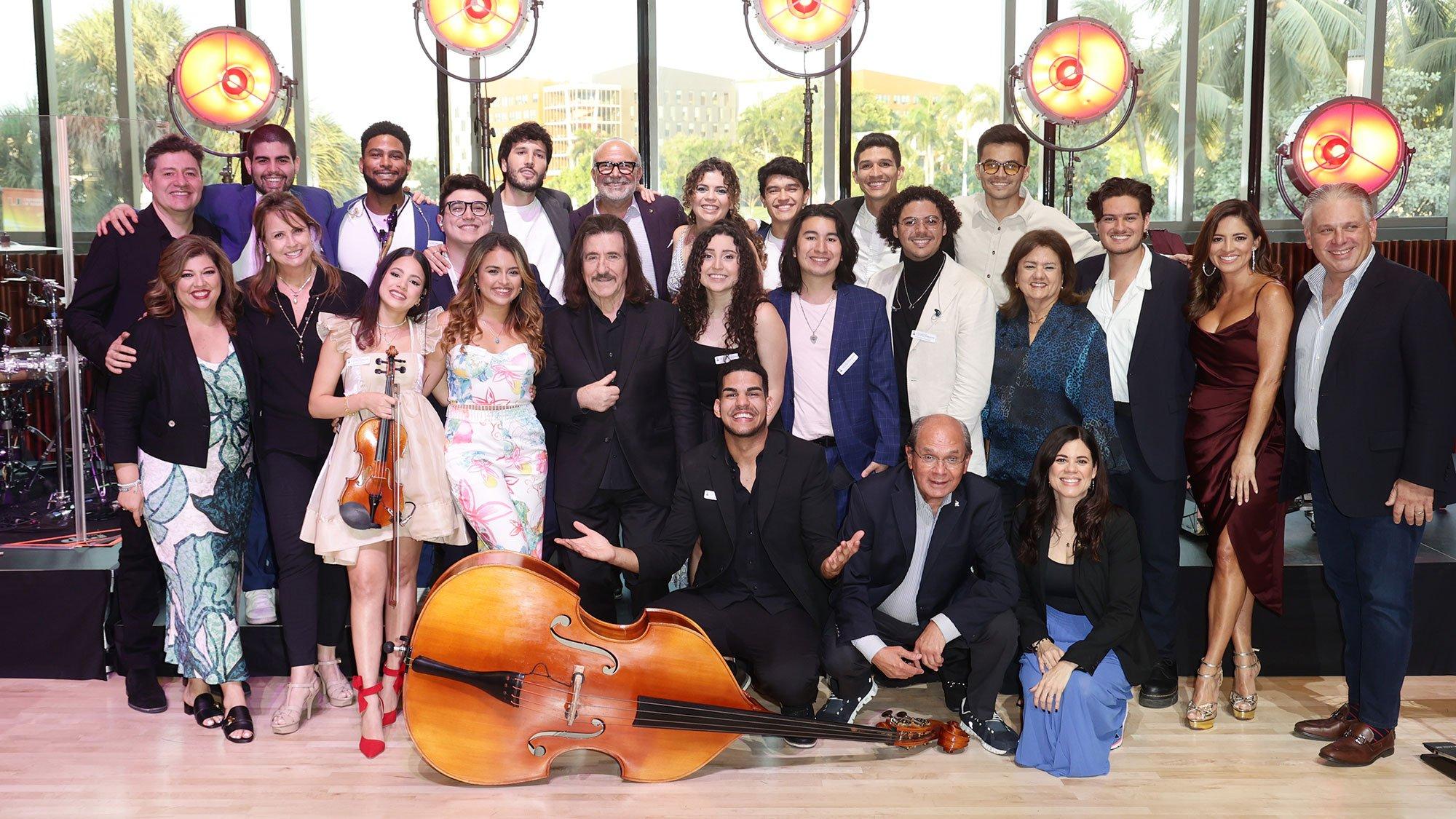
Photo: John Parra/Getty Images for The Latin Recording Academy
news
Latin GRAMMY Cultural Foundation Awards Prodigy Scholarship To Leo Luna Roblejo & Announces More Tuition Scholarship Recipients
The Sebastián Yatra Scholarship has been awarded to Cuban double bass player Leo Luna Roblejo. An additional 43 students will receive tuition assistance through Gifted Tuition, Tuition Assistance, Bulova and Gibson Gives scholarships.
On Aug. 7, the Latin GRAMMY Cultural Foundation awarded the Sebastián Yatra Scholarship to Cuban double bass player Leo Luna Roblejo during a special ceremony in Miami.
The event — hosted by award-winning journalist Pamela Silva and sponsored by Loud And Live as part of their $1 million commitment over five years — featured performances by Yatra, a Latin GRAMMY winner and GRAMMY nominee, alongside Luna Roblejo, and additional scholarship recipients and alumni.
Also known as the Prodigy Scholarship, the Sebastián Yatra Scholarship was created 10 years ago to support music education and Latin music genres. It is sponsored annually by a Latin music icon and holds a maximum value of $250,000. Scholarship funds will allow Luna Roblejo to pursue a bachelor's degree at Berklee College of Music in Boston, beginning this fall.
In addition, the scholarship supports the costs of tuition, room, board and wrap-around services that include ongoing mentorship and learning opportunities provided in partnership with the Latin GRAMMY Cultural Foundation. Previous sponsors include: Nicky Jam (2023), Sofia Carson (2022), Juanes (2021), Julio Iglesias (2020), Emilio and Gloria Estefan (2019), Carlos Vives (2018), Miguel Bosé (2017), Juan Luis Guerra (2016) and Enrique Iglesias (2015).
Luna Roblejo, who resides in Miami, was selected by the Foundation's Scholarship Committee from a highly competitive group of hundreds of applicants worldwide.
"It is with immense pride that we bestow our tenth Prodigy Scholarship as we continue to celebrate a decade of the Foundation’s unwavering mission to support and cultivate the next generation of Latin music creators," said Raquel "Rocky" Egusquiza, Executive Director of the Latin GRAMMY Cultural Foundation. "We are profoundly grateful for the generosity of respected artists such as Sebastián Yatra that provides these talented musical students the opportunity to follow their dreams and carry forward the rich legacy of Latin music."
Since its establishment, the Latin GRAMMY Cultural Foundation has committed an extraordinary sum of more than $10 million in scholarships, grants, musical instruments, and educational programs throughout the United States and Ibero-America.
"Being a part of this incredible initiative alongside the Latin GRAMMY Cultural Foundation, which supports young people on their journey to fulfill their dreams in music, is an honor," shared Yatra. "Music has the power to change lives and unite cultures, and I am excited to see how these young people, like Leo, will carry forward the legacy of Latin music with passion and dedication. I am grateful for the opportunity to contribute to their education and artistic development."
"Music has been my calling and my passion ever since I was a young child, and to have the opportunity to pursue my dream thanks to the support of Sebastián Yatra and the incredible Latin GRAMMY Cultural Foundation is beyond anything I could have imagined," said Luna Roblejo. "I am committed to making you all proud, and I will take full advantage of this opportunity, working hard every day to make the most of this gift."
The Foundation also announced the recipients of its annual Gifted Tuition, Tuition Assistance, Bulova and Gibson Gives scholarships — with additional funds from First Horizon and the Arturo Sandoval Institute — that award 43 talented students from diverse backgrounds the opportunity to pursue an education at some of the most prestigious music institutions in the world.
Gifted Tuition Scholarship Recipients
The following three students will each receive the Gifted Tuition Scholarship, with a maximum value of $120,000, which will support the tuition costs of four years of study at the university, college or music institution of their choice, including wrap-around services provided by the Foundation. The recipients are:
Abraham Jiménez Sánchez, pianist from the Dominican Republic
Marcos Castilla Jiménez, pianist from Spain
Melany Fiorella Cisneros Fernández, bass player from Peru
Tuition Assistance, Bulova And Gibson Gives Scholarship Recipients
In addition, the 40 students below will each receive the Tuition Assistance Scholarship, a one-time scholarship with a maximum value of $12,500. This scholarship can be used toward tuition costs at the university or college of their choice and includes wrap-around services provided by the Foundation.
Bulova will sponsor one Tuition Assistance Scholarship, while Gibson Gives — Gibson's philanthropic division — will sponsor three Tuition Assistance Scholarships of up to $12,500 each. Gibson Gives will also gift a Gibson or Epiphone instrument to students pursuing a music education with electric or acoustic guitar as their principal instrument.
| NAME | INSTRUMENT | COUNTRY | COLLEGE/UNIVERSITY |
|---|---|---|---|
| Andrés Felipe Palacios | Guitar | Colombia | Peabody Institute of The Johns Hopkins University |
| Pedro Henrique Cheik Costantin | Guitar | Brazil | Faculdade de Música Souza Lima |
| Pedro Secco | Guitar | Brazil | Berklee College of Music |
| Adrian Delgado | Piano | Venezuela | Berklee College of Music |
| Alberto Barba | Piano | Spain | Manhattan School of Music |
| Andrés Guerra | Guitar | Venezuela | Mannes School of Music at The New School |
| Carla Chiang | Piano | Dominican Republic | Berklee College of Music |
| Carlos Chacon | Violin | Venezuela | Roosevelt University |
| Cobe Isai Banda Salcido | Guitar | Mexico | Tecnológico de Monterrey, México |
| Cristian Tamblay | Drum Set | Chile | New York University |
| Daniel Olivero | Voice | Venezuela | Art House Academy |
| Dora Oliva Devoghel | Violin | Venezuela | New England Conservatory |
| Eduardo de Abreu Moro | Guitar | Brazil | New York University |
| Estevan Olmos | Percussion | United States | University of Southern California |
| Filipe Gomes da Silva | Trombone | Brazil | Faculdade de Música Souza Lima |
| Franco Dilmé Romero | Saxophone | Cuba | University of North Carolina Greensboro |
| Guillermo Wan | Bass | Ecuador | Berklee College of Music |
| Héctor Moreno Guerrero | Piano | Dominican Republic | Berklee College of Music |
| João Vítor Aredes Martins Paulo | Drum Set | Brazil | Faculdade de Música Souza Lima |
| Juan Bautista Saus Ruiz | Saxophone | Spain | Eastman School of Music |
| Juan Diego Alvan Madueño | Piano | Peru | Los Angeles College of Music |
| Laia Martínez Gelabert | Bass | Spain | Berklee College of Music |
| Laura Victoria Arean | Piano | Cuba | Schulich School of Music, Canada |
| Lorenzo Curik | Drum Set | Argentina | Berklee College of Music |
| Lucía Gregorio | Voice | Spain | Centro Superior Música Creativa |
| Luis González | Cello | Venezuela | Roosevelt University |
| Manuela Sánchez Goubert | Voice | Colombia | Berklee College of Music |
| María Jose Insuasti | Voice | Colombia | Concordia University Irvine |
| María Medina | Piano | Cuba | Berklee College of Music |
| Marien Femerling García | Piano | Mexico | Manhattan School of Music |
| Marina Marchi Silveira | Voice | Brazil | Faculdade de Música Souza Lima |
| Murilo Reis Teixeira | Piano | Brazil | Faculdade de Música Souza Lima |
| Pau Jorba Bonastre | Saxophone | Spain | Mannes School of Music at The New School |
| Octavio Mujica | Cello | Venezuela | San Francisco Conservatory of Music |
| Pia Ella Odar Ruiz | Bass | Peru | Berklee College of Music |
| Rafael Nocedo | Piano | Cuba | Berklee College of Music |
| Sergio de Miguel | Piano | Spain | Columbia College Chicago |
| Simón Martínez | Piano | Ecuador | Berklee College of Music |
| Sofía Almeida | Voice | Portugal | Berklee College of Music |
| Andrés Escalona | Bass | Colombia | Berklee College of Music |
More About The Latin Recording Academy

Latin GRAMMY Cultural Foundation Awards Prodigy Scholarship To Leo Luna Roblejo & Announces More Tuition Scholarship Recipients
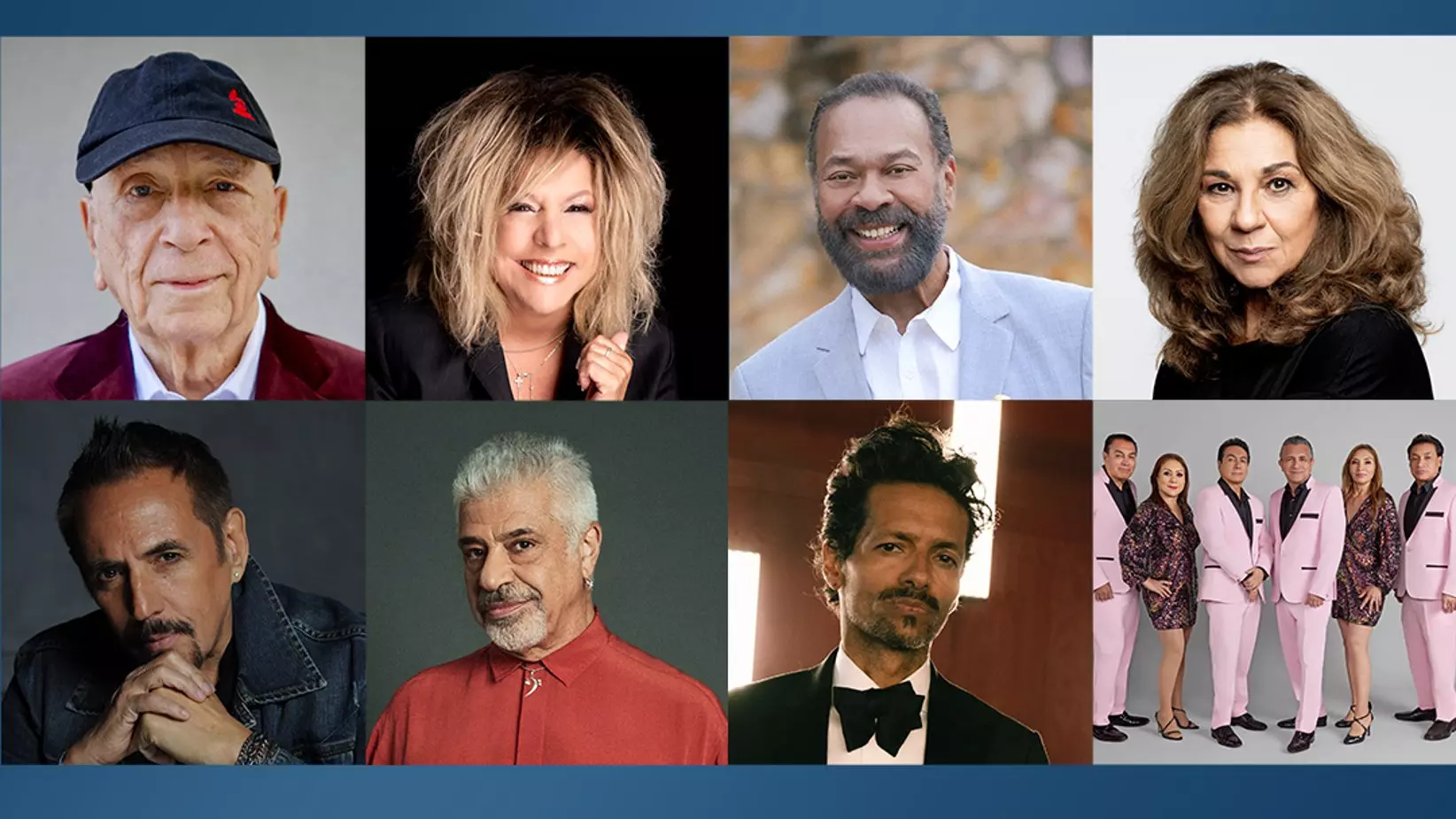
The Latin Recording Academy Announces 2024 Special Awards Recipients: Los Ángeles Azules, Draco Rosa, Albita, Lolita Flores & More
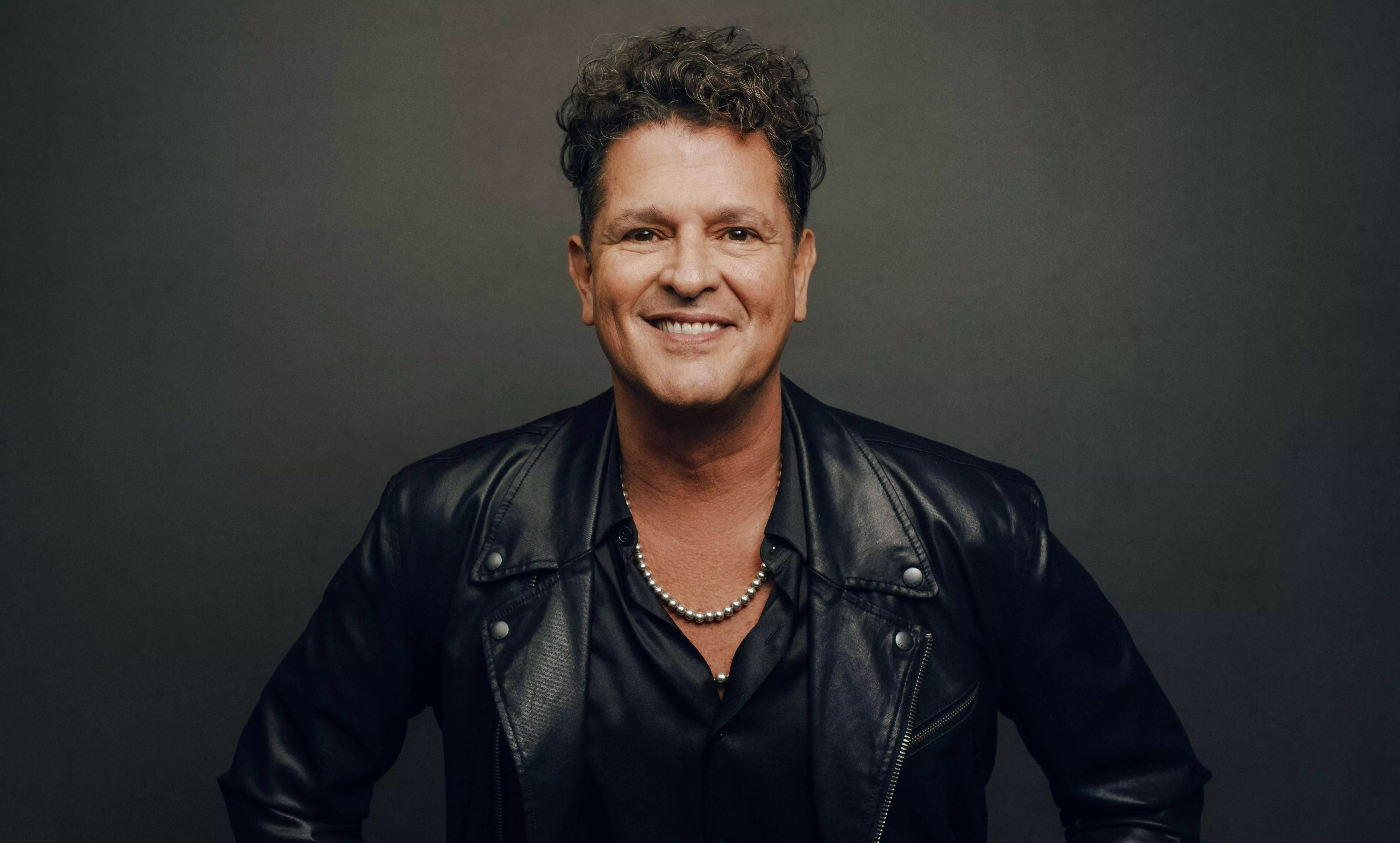
Carlos Vives Named The 2024 Latin Recording Academy Person Of The Year: What To Know About The Latin Music Icon

2024 Latin GRAMMYs To Take Place Thursday, Nov. 14, In Miami; Nominations To Be Announced Tuesday, Sept. 17
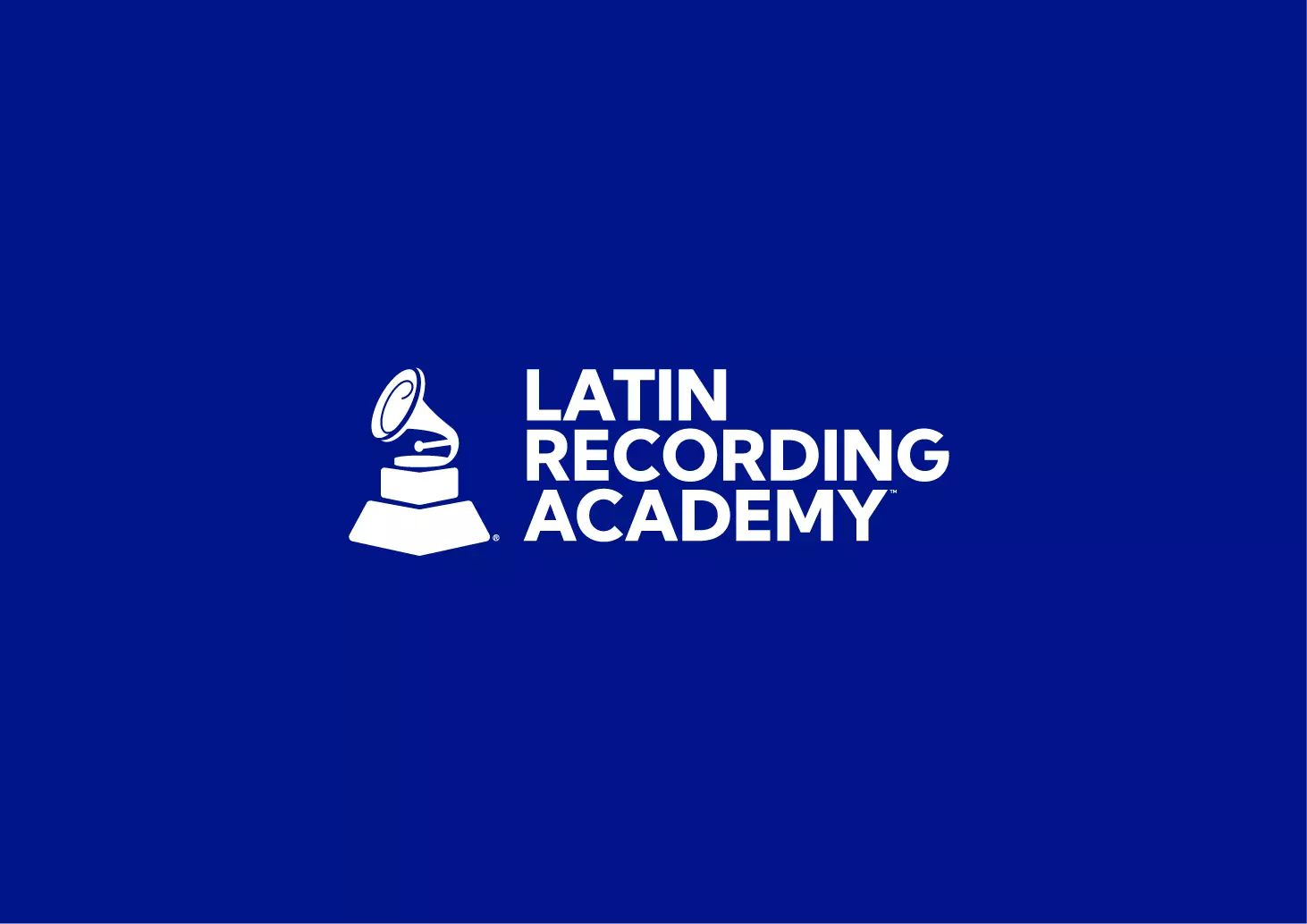
Two New Categories Added For The 2024 Latin GRAMMYs: Best Latin Electronic Music Performance & Best Contemporary Mexican Music Album

Photo: Arenovski
feature
Peso Pluma's Road To 'ÉXODO': The GRAMMY Winner Navigates The Consequences Of Global Stardom On New Album
"Fans really get to see the other side of the coin; there are two sides to me. It's darker, rawer," Peso Pluma says of his latest album 'ÉXODO'
Peso Pluma marked his musical destiny with a Tupac tribute tattoo in the center of his clavicle: "All Eyez On Me."
The Mexican artist, born Hassan Emilio Kabande Laija, doesn't remember exactly what year he inked his chest. He knows it was well before his debut in music. Those four words reflected Peso's irrefutable confidence that the world's eyes would eventually be on him.
The world's eyes are indeed on Peso Pluma. In less than two years, the singer achieved global fame by singing corridos tumbados, traversing a path never before trodden by a música Mexicana artist.
At 25, Peso Pluma is at the forefront of a new generation of música Mexicana artists that have successfully modernized traditional Mexican rhythms, such as corridos, by infusing them with elements from urban music and a hip-hop aesthetic. The weight of representing an entire genre and a country could be great for some. But pressure doesn't affect Peso Pluma; on the contrary, it motivates him to keep working to exalt his roots.
"We've come a long way, but we still have a long way to go. And that doesn't mean we have to slow down; it doesn't mean everything is over. This is the beginning of everything," Peso Pluma said in a TikTok video before a performance at the Toyota Arena in Ontario, Canada, a little over a year ago.
Out June 20, Peso's extensive new album ÉXODO seeks to cement his global star status further. Over 24 tracks, the singer continues to explore corridos tumbados and digs into his urban side via much-awaited collaborations with reggaeton and hip-hop icons. Among those big names is Peso's teenage idol, the American rapper and producer Quavo, as well as further afield collaborations with Cardi B.
"ÉXODO is a project I've been working on for over a year before we even won the GRAMMY. GÉNESIS was an incredibly special project, and I knew we couldn't make the same diamond twice," the singer tells GRAMMY.com in a written interview.
Peso Pluma's path to the global stage has been lightning-fast. While he started releasing songs in 2020, Peso will remember March 2023 as the month that propelled him into global mega-stardom. His collaboration with Eslabón Armado on "Ella Baila Sola" led him to become a household name outside his native Mexico.
The hit resonated with an audience eager for new sounds, accompanying social media videos and surpassing a billion streams on Spotify. "Ella Baila Sola" became the first Mexican music track to top the platform's global chart. On Billboard, it conquered No. 1 on the magazine's Global 200 chart for six weeks and reached the coveted No. 4 spot on the Hot 100 chart. The mega-hit took Peso Pluma and Eslabon Armado to make their Latin GRAMMY stage debut in November with an electrifying performance.
Another collaboration, "La Bebe (Remix)" with Mexican reggaeton artist Yng Lvcas, released a day after "Ella Baila Sola," also contributed to Peso Pluma's virality in a completely different genre, but one in which he feels comfortable: urban music.
Learn more: Peso Pluma's 10 Biggest Collabs: From "Bzrp Sessions" To "Ella Baila Sola" &"Igual Que Un Ángel"
As Peso Pluma gained traction with a global audience, his February 2022 single with Raúl Vega, put him, for better or worse, on the map in Mexico. The warlike content of "El Belicón" lyrics and video clip attracted attention for the way it allegedly promoted narcoculture.
Despite growing criticism, Peso Pluma remained tight-lipped regarding references to high-profile members of the Mexican drug trade, as well as drug use and trafficking. In a rare admission to GQ magazine, the singer explained this is a "delicate subject to talk about, but you have to touch on it with transparency — because it's the reality of things."
"In hip-hop, in rap, just like in corridos, and other urban music like reggaeton, it talks about reality. We're not promoting delinquency at all. We're only talking about things that happen in real life," the singer explained.
With the success of "El Belicón" and "Ella Baila Sola" under his belt, Peso Pluma released GÉNESIS in June 2023. Despite being his third album, Peso considers it his true debut in music.
"I didn't want to delete my previous albums [Efectos Secundario and Ah Y Que?] because they represent my beginnings," Peso told Billboard in a cover story published a few weeks after the release of GÉNESIS. In the same conversation, the singer said he saw himself winning his first GRAMMY and breaking more records.
Read more: 5 Takeaways From Peso Pluma's New Album 'GÉNESIS'
In February 2024, Peso Pluma did just that. He took home the golden gramophone for Best Música Mexicana Album (Including Tejano) — his first GRAMMY Award. This victory didn't weigh on him as he approached his next production. "It pushed me to want to create something different that the fans haven't heard from me before," Peso Pluma tells GRAMMY.com.
While GÉNESIS and ÉXODO may differ in substance, they share similarities beyond music. That both records pull from the Bible for their names is not a random occurrence; the opening book of the Hebrew and Christian Bible delves into the genesis of creation, while the Book of Exodus explores the themes of liberation, redemption, and Moses' role in leading the Israelites through the uncharted waters of the Red Sea.
"ÉXODO is the continuation of GÉNESIS, which was the beginning," Peso Pluma explains to GRAMMY.com. "ÉXODO means new beginnings, a new era for me. We are preparing for the next chapter, and that's what we are doing for Mexican music, paving the way, laying the groundwork for what's next because it doesn't stop here."
His "sophomore" album is divided into two discs: the first is corridos, and the second is urban. It also continues the line of collaborations, with twenty tracks where Peso Pluma shares the limelight.
"Some of my fans were craving música Mexicana, and some were craving urbano, and I wanted to give them everything while still staying true to myself and choosing songs and lyrics that spoke to me," he continues.
ÉXODO's disc one starts with "LA DURANGO," the album's fourth single, featuring Eslabon Armando and Junior H. In the record, he also invites collaborators such as Natanael Cano and Gabito Ballesteros for "VINO TINTO" and Mexican rising star Ivan Cornejo on the melancholic "RELOJ," among others.
For Side B, Peso enlisted heavyweights from the urban genre in the Anglo and Latin markets: Anitta in the steamy "BELLAKEO," Rich The Kid in the bilingual "GIMME A SECOND," and Quavo in the existential trap "PA NO PENSAR." Cardi B, Arcángel, Ryan Castro, Kenia OS, and DJ Snake complete ÉXODO's genre crossover.
In ÉXODO, luxury, drugs, alcohol, and women continue to take center stage in the lyrics, accompanied by fast-paced guitar-driven melodies and reverb-dense vocals. However, the production sheds light on the vulnerable side of Peso and explores the unexpected consequences of becoming globally famous.
"Fans really get to see the other side of the coin; there are two sides to me. It's darker, rawer," Peso says about the record.
In the songs "HOLLYWOOD" and "LA PATRULLA," for example, Peso details how this musical path keeps him up at night, as well as his aspirations, and how he remains the same despite his success.
Perhaps one of the deepest and rawest songs on the album is "14:14," a track inspired by the Bible verse 14:14 from the Book of Exodus, which, the singer explains, was fundamental amidst the turbulence he faced on the way to global stardom.
"[The] verse 14:14 says 'The LORD will fight for you; you need only to be still.' This verse couldn't be truer," Peso Pluma says. "Over time, I learned to really trust in this and believe that some things are not up to me and I should trust the process."
In the song — one of the few on the album without a collaboration — Peso references the challenges of his profession and how his faith has kept him afloat amid the vicissitudes. "Things from the job that no one understands/I hide the rosary under my shirt so I don't poison myself, so I don't feel guilty/because whatever happens, the Boss will forgive me," he sings.
In "BRUCE WAYNE," Peso Pluma croons about the passionate feelings his career arouses: "First they love you, and then they hate you/wishing the worst, envy and death," the song says.
The singer resorts to comparing himself to a superhero figure again. In an unusual twist, Peso crosses comic universes, moving from his now traditional reference to Spider-Man to one from the DC Comics world: Bruce Wayne, Batman's secret identity. A wealthy man, part of Gotham's high society, Bruce Wayne is known for transforming his darkness into power while remaining reserved and isolated.
"Everyone has two sides of them, even me," Peso tells GRAMMY.com. "Peso Pluma on stage is a high-energy person, someone who is powerful and dominates a show and isn't afraid of anything. And then there is Hassan, who's chill and more relaxed and who deals with all the realities of life."
During the year and a half it took him to complete ÉXODO, Peso Pluma had to deal with the diverse nuances of a global star's life, including a widely publicized breakup from Argentine rapper/singer Nicki Nicole, the cancellation of one of his shows in October 2023 after a Mexico drug cartel issued a death threat against him, and a media frenzy over his alleged admission to a rehabilitation clinic, the latest a rumor he laid to rest during a March interview with Rolling Stone for his Future of Music cover story.
"The reality is, all these days, I've been in the studio working on ÉXODO," the artist explained to Rolling Stone.
Most of 2023 was a successful balancing act for Peso Pluma, who combined touring, an album release, rare media engagements, two Coachella appearances, all the while developing another record. According to the singer, ÉXODO was created in Los Angeles, Miami, New York, and Mexico. "We go to the studio everywhere!" Peso says. "It doesn't really matter where we are; I love to get into the studio and work when we have free time."
Like GÉNESIS, ÉXODO will be released via Peso Pluma's Double P Records, of which he is the CEO and A&R. Much of the talent the Mexican singer has signed to his label took part in the album's production, and songwriting process.
"For the Mexican music side, I had the whole [touring] band with me; I like to have them involved in the process so that we can all give our input on how it sounds, discuss what we think needs to be changed, create new ideas," he explains.
Peso Pluma knows that echoing the success of 2023 is no easy task. He was the most streamed artist in the U.S. on YouTube, surpassing Taylor Swift and Bad Bunny, and was the second most-listened to Latin artist in the country, amassing an impressive 1.9 billion streams, according to Luminate.
Música Mexicana emerged as one of the most successful genres in 2023, witnessing a remarkable 60 percent surge in streaming numbers, adds Luminate's annual report, crediting Peso Pluma along Eslabon Armado, Junior H, and Fuerza Regida as part of this success.
Collaborations on and off the mic have undoubtedly played a significant role in the rise of Música Mexicana on the global stage. Peso knows that the key to continuing onward is teaming up with renowned artists inside and outside his genre.
"All of us coming together is what pushed música Mexicana to go global," the singer affirms. "We showed the world what Mexico has to offer, and now no one can deny the power and talent we have in our country."

Photo: Kito Muñoz
interview
Nathy Peluso Is 'Grasa': How Hard-Earned Lessons, The Mafia & A Lost Album Led To Her Most Vulnerable Work
Both honest and brash, Nathy Peluso's first album in four years is the culmination of therapy and deep musical work. "It’s important to bring that energy to the music, like, rude, strong, dangerous," she says.
Those who follow underground Spanish music have known the name Nathy Peluso for a while, but in 2020 the Argentine-Spanish artist came to the attention of a broader audience. That year, the rapper and singer released her official debut album Calambre, which won a Latin GRAMMY for Best Alternative Album and received a GRAMMY nomination for Best Latin Rock or Alternative Album in 2021.
Four years later, Peluso is back with Grasa [Grease]. Out May 24, the 16 track follow-up is simultaneously bolder, more vulnerable and more revealing than its predecessor, crystalizing the artist's iconoclastic and often cinema-inspired vision.
At Legacy Records, a hotspot for haute Mediterranean fare in Manhattan's Hudson Yards neighborhood, Nathy is draped in an oversized blazer and pants. She looks like a relaxed, elegant CEO and the style becomes her, especially as she balances it with ultra-feminine touches. Today, its long nails tipped in fire-engine red.
Her fashion choices are as pointed as her manicure, on and off stage. In the recent video for "Aprender a Amar," she raps ferociously into a mirror, sharply dressed in a pin-stripe tie, a jacket with exaggerated shoulders, and delicate black lace gloves. These sartorial choices ask, Why settle for a mob-wife aesthetic when you can be a don yourself?
Both visually and aurally, Nathy Peluso is part cinematic diva and part underworld kingpin, with a fair amount of Missy Elliott swagger. Her tough, independent persona was on full display on her now-multimillion streamed 2020 Bizarrap session, which smoldered and crackled with her bombast. It was fully formed on "Business Woman," from Calambre, and returned with a roar on her 2021 single "Mafiosa," a high drama salsa track.
Her powerful energy is pure hip-hop in steel-toe Timbs, but she performs with the generous spirit of a burgeoning pop star ministering to a big house of fans. On Grasa, Nathy Peluso brings humanity to her braggadocio. This doesn’t stop her from picking up the mafia saga where she left off on Calambre. The opening track is titled "Corleone."
Ahead of the release of her first album in four years, Nathy Peluso spoke with GRAMMY.com about overcoming creative burnout, taking inspiration from mob movies, and the true meaning of "grasa."
This album is more personal than your previous releases. What led you to open up more lyrically?
I think it just happened because I am growing. I am learning and I need to tell my truth. The way for me to do that is music. It’s been four years, but, when the moment came, I was ready.
Speaking of four years ago, 2020 was a very big year for you. A lot happened. What are your most vivid memories from that time?
Calambre was the moment. It was really special for me. Winning the GRAMMY was the moment, and then touring with that album was an amazing learning experience for me. I grew up on the stage.
I grew up as a woman, as an artist, as a performer, maybe as a lover too. You are traveling around the world with so much pressure. Physically, it was a difficult show. I was alone on stage, with my musicians, but no dancers. It was a challenge.
I grew up in so many ways, but when I finished that tour I was broken. My soul was broken. I was empty. I started looking for myself. It was very tough.
It sounds like you were experiencing creative burnout.
Yes, my brain was broken, but it was necessary in order to start again. I did an album then, but I decided not to go with that album and to start again. So, it was a very long path.
You wrote a whole album and then discarded it? What wasn’t working about it?
It was working, but it wasn’t the feelings I wanted to share and the music I wanted to share. Sometimes there are projects whose purpose is just to learn from. It was a process of learning for me. That was a very special moment.
You start feeling like a failure, but no. It was necessary to go through that to get to Grasa. The things I learned were exactly the things I needed to know to then make this music.
So, how did you overcome this period of burnout and get to the point where you were feeling creative again?
A lot of therapy. A lot of working on my s— and confronting it.
Is there one song on Grasa that is more intense to perform, or more emotional for you than the others?
"Envidia" is talking real s—. Things happen around you and you need to know who you are and what your intention is. You have to be focused on what you want to bring to the world and not care about anything besides your craft. People are going to talk. Things are going to be crazy. You’ve got to know your choice, your path.
Can you tell me about the song "Corleone"? How do gangster movies inspire you?
I have a song called "Mafiosa." It’s a character I love to perform and I see myself in that character. It’s relatable. The mafia have codes that represent me — not everything [laughs] — but, you know, the family, the legacy, working hard, respect. That kind of feeling in music, in cinema, is what I was looking for. I love the aesthetic. I love Tarantino. I love Tony Montana, the character. On stage, I feel like him sometimes.
I love for a woman to be that type of character. I think it’s interesting. Usually, those kinds of feelings in music or cinema are represented by men. It’s always that way in salsa. If you look at Celia or Gloria, they were always more romantic. Maybe La Lupe was dangerous. For me, it’s important to bring that energy to the music, like, rude, strong, dangerous. Be careful, bitch!
What were some of your specific musical influences while working on this album?
Always folklore and roots, salsa and bolero, but then I was paying attention to Kendrick Lamar and Kanye West. They are a big inspiration for me.
How do you bridge the gap, or find the connections among your different influences?
I don’t even know. I just do music, really. I go to the studio and I start singing. I just feel it. I go to the studio, and suddenly I want to sing, and I want to cry. And then another day, I feel powerful and I want drama and aggressive stuff. It’s very honest. The starting point is always the way I feel.
Is it important to you to make music that empowers other women?
Yes. For sure. But it wasn’t ever a strategy, like, "I want to do music for empowering women." I just did my music without direction. Then I discovered people were feeling the power and using it. I feel inspired by that, but it wasn’t the point.
What does the word "grasa" mean to you?
I chose that word because it’s the strongest word. It’s dirty. It’s funky. But it’s a word that, at least in Spanish, has a lot of meanings. So, I want people to choose the meaning. After listening to the album, you can choose the meaning and maybe redefine it with the album.
How Danna Paola Created 'CHILDSTAR' By Deconstructing Herself

Photo: Jathan Campbell
list
How Much Is A GRAMMY Worth? 7 Facts To Know About The GRAMMY Award Trophy
Here are seven facts to know about the actual cost and worth of a GRAMMY trophy, presented once a year by the Recording Academy at the GRAMMY Awards.
Since 1959, the GRAMMY Award has been music’s most coveted honor. Each year at the annual GRAMMY Awards, GRAMMY-winning and -nominated artists are recognized for their musical excellence by their peers. Their lives are forever changed — so are their career trajectories. And when you have questions about the GRAMMYs, we have answers.
Here are seven facts to know about the value of the GRAMMY trophy.
How Much Does A GRAMMY Trophy Cost To Make?
The cost to produce a GRAMMY Award trophy, including labor and materials, is nearly $800. Bob Graves, who cast the original GRAMMY mold inside his garage in 1958, passed on his legacy to John Billings, his neighbor, in 1983. Billings, also known as "The GRAMMY Man," designed the current model in use, which debuted in 1991.
How Long Does It Take To Make A GRAMMY Trophy?
Billings and his crew work on making GRAMMY trophies throughout the year. Each GRAMMY is handmade, and each GRAMMY Award trophy takes 15 hours to produce.
Where Are The GRAMMY Trophies Made?
While Los Angeles is the headquarters of the Recording Academy and the GRAMMYs, and regularly the home of the annual GRAMMY Awards, GRAMMY trophies are produced at Billings Artworks in Ridgway, Colorado, about 800 miles away from L.A.
Is The GRAMMY Award Made Of Real Gold?
GRAMMY Awards are made of a trademarked alloy called "Grammium" — a secret zinc alloy — and are plated with 24-karat gold.
How Many GRAMMY Trophies Are Made Per Year?
Approximately 600-800 GRAMMY Award trophies are produced per year. This includes both GRAMMY Awards and Latin GRAMMY Awards for the two Academies; the number of GRAMMYs manufactured each year always depends on the number of winners and Categories we award across both award shows.
Fun fact: The two GRAMMY trophies have different-colored bases. The GRAMMY Award has a black base, while the Latin GRAMMY Award has a burgundy base.
Photos: Gabriel Bouys/AFP via Getty Images; Frederick M. Brown/Getty Images
How Much Does A GRAMMY Weigh?
The GRAMMY trophy weighs approximately 5 pounds. The trophy's height is 9-and-a-half inches. The trophy's width is nearly 6 inches by 6 inches.
What Is The True Value Of A GRAMMY?
Winning a GRAMMY, and even just being nominated for a GRAMMY, has an immeasurable positive impact on the nominated and winning artists. It opens up new career avenues, builds global awareness of artists, and ultimately solidifies a creator’s place in history. Since the GRAMMY Award is the only peer-voted award in music, this means artists are recognized, awarded and celebrated by those in their fields and industries, ultimately making the value of a GRAMMY truly priceless and immeasurable.
In an interview featured in the 2024 GRAMMYs program book, two-time GRAMMY winner Lauren Daigle spoke of the value and impact of a GRAMMY Award. "Time has passed since I got my [first] GRAMMYs, but the rooms that I am now able to sit in, with some of the most incredible writers, producers and performers on the planet, is truly the greatest gift of all."
"Once you have that credential, it's a different certification. It definitely holds weight," two-time GRAMMY winner Tariq "Black Thought" Trotter of the Roots added. "It's a huge stamp as far as branding, businesswise, achievement-wise and in every regard. What the GRAMMY means to people, fans and artists is ever-evolving."
As Billboard explains, artists will often see significant boosts in album sales and streaming numbers after winning a GRAMMY or performing on the GRAMMY stage. This is known as the "GRAMMY Effect," an industry phenomenon in which a GRAMMY accolade directly influences the music biz and the wider popular culture.
For new artists in particular, the "GRAMMY Effect" has immensely helped rising creators reach new professional heights. Samara Joy, who won the GRAMMY for Best New Artist at the 2023 GRAMMYs, saw a 989% boost in sales and a 670% increase in on-demand streams for her album Linger Awhile, which won the GRAMMY for Best Jazz Vocal Album that same night. H.E.R., a former Best New Artist nominee, saw a massive 6,771% increase in song sales for her hit “I Can’t Breathe” on the day it won the GRAMMY for Song Of The Year at the 2021 GRAMMYs, compared to the day before, Rolling Stone reports.
Throughout the decades, past Best New Artist winners have continued to dominate the music industry and charts since taking home the GRAMMY gold — and continue to do so to this day. Recently, Best New Artist winners dominated the music industry and charts in 2023: Billie Eilish (2020 winner) sold 2 million equivalent album units, Olivia Rodrigo (2022 winner) sold 2.1 million equivalent album units, and Adele (2009 winner) sold 1.3 million equivalent album units. Elsewhere, past Best New Artist winners have gone on to star in major Hollywood blockbusters (Dua Lipa); headline arena tours and sign major brand deals (Megan Thee Stallion); become LGBTIA+ icons (Sam Smith); and reach multiplatinum status (John Legend).
Most recently, several winners, nominees and performers at the 2024 GRAMMYs saw significant bumps in U.S. streams and sales: Tracy Chapman's classic, GRAMMY-winning single "Fast Car," which she performed alongside Luke Combs, returned to the Billboard Hot 100 chart for the first time since 1988, when the song was originally released, according to Billboard. Fellow icon Joni Mitchell saw her ‘60s classic “Both Sides, Now,” hit the top 10 on the Digital Song Sales chart, Billboard reports.
In addition to financial gains, artists also experience significant professional wins as a result of their GRAMMY accolades. For instance, after she won the GRAMMY for Best Reggae Album for Rapture at the 2020 GRAMMYs, Koffee signed a U.S. record deal; after his first GRAMMYs in 2014, Kendrick Lamar saw a 349% increase in his Instagram following, Billboard reports.
Visit our interactive GRAMMY Awards Journey page to learn more about the GRAMMY Awards and the voting process behind the annual ceremony.
